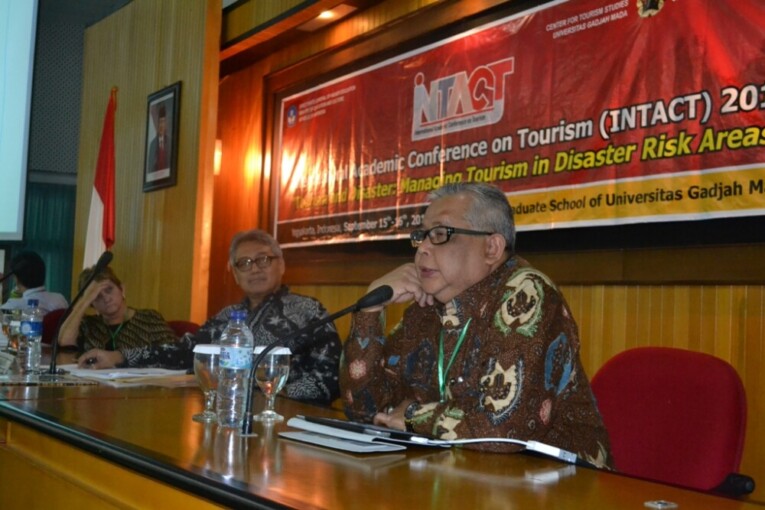
YOGYAKARTA – There are at least 13 types of disasters in Indonesia whether natural or human induced. These include flooding, volcanic eruption, earthquake, tsunami, landslide, draught, and forest fire. They can have great economic impacts on people, which includes tourism sector.
“This sector is very vulnerable due to safety and health concerns, thus a strategy is required to minimise the risks,” said Director of Disaster Management Magister in the UGM Graduate School, Prof. Dr, Sudibyakto, M.S., during an international conference on tourism management amidst disaster risks on Monday (15/9) in the School.
Despite government special units to mitigate disasters, mitigation efforts for tourism destination is still lacking, especially for areas that are short of natural resources, such as Yogyakarta and Bali.
To minimise visitor’s concerns over disaster possibilities, Sudibyakto called for risk assessment and early warning system in those places that need to be done by government, local people, and tourism industry players. He said, “This is much more effective than the post-disaster recovery programme.”
Lecturer in Spatial Planning from University of Hawaii, Dolores Foley, Ph.D., said during the past decade, some disasters had made very bad impacts on areas that have coastal tourism destination, including Bali and Nusa Tenggara. In fact, as many as 28 areas in the country are prone to earthquake and tsunami. She added such areas require effective communication, planning, and partnership between community and tourism industry players to anticipate against possible disasters.

